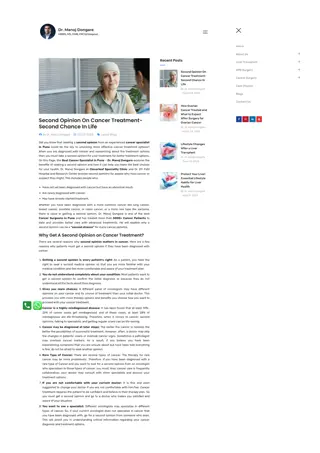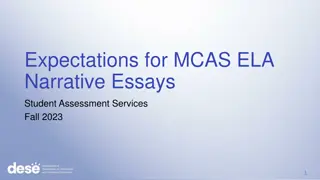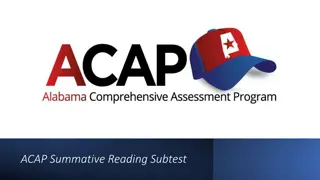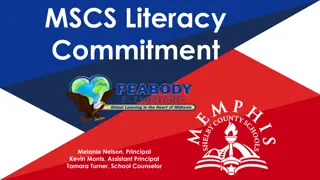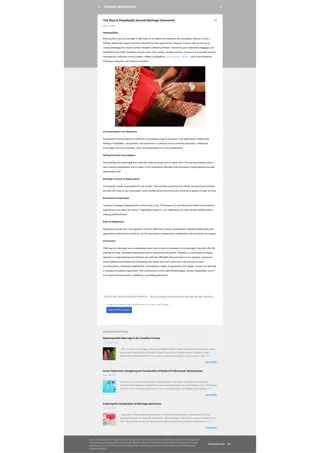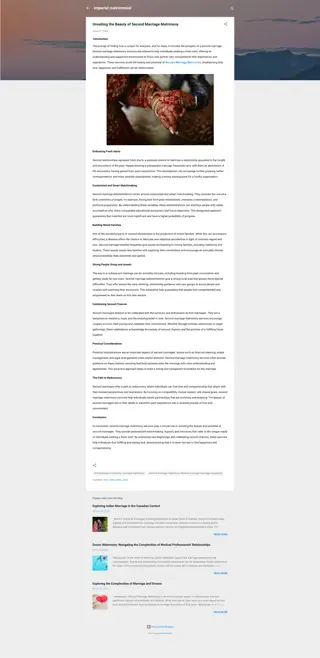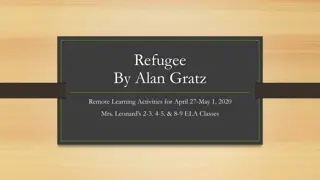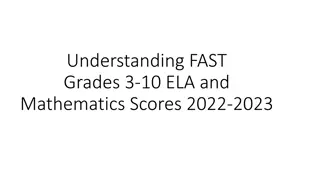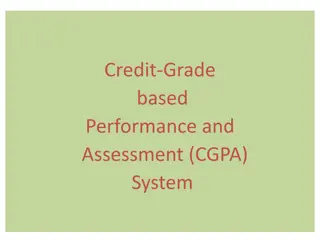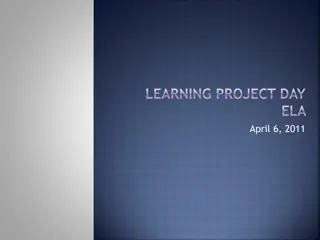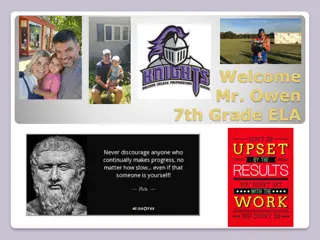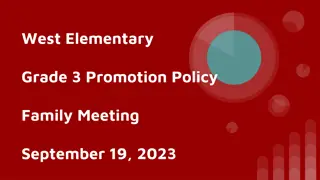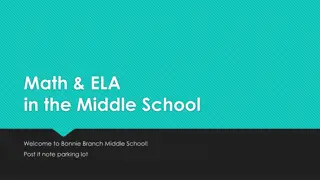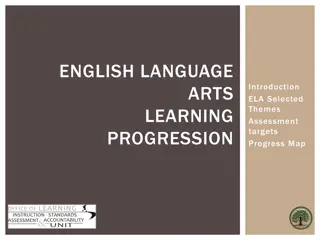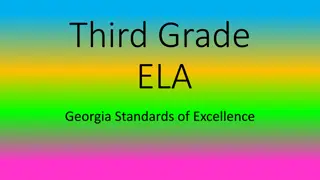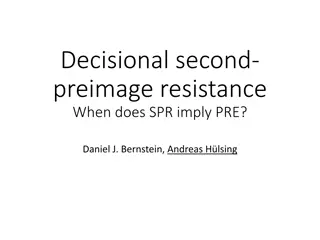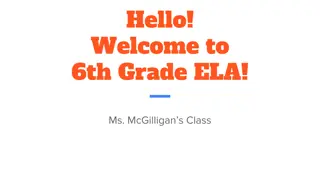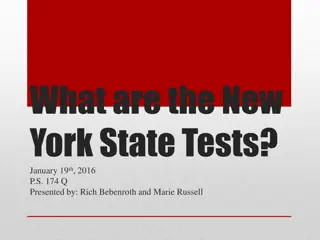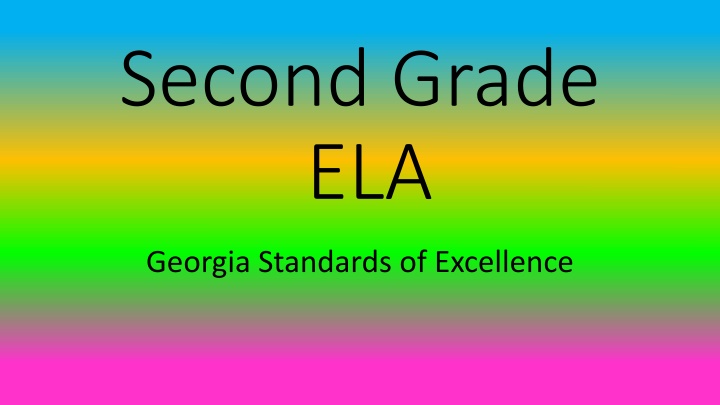
Georgia ELA Second Grade Standards of Excellence in Literary Reading
Explore the Second Grade ELA Georgia Standards of Excellence focusing on Literary Reading, including key ideas and details, recounting stories, character responses, word and phrase meanings, story structure, character perspectives, and integration of knowledge and ideas. These standards aim to enhance students' comprehension and analysis skills through engaging literary texts.
Download Presentation

Please find below an Image/Link to download the presentation.
The content on the website is provided AS IS for your information and personal use only. It may not be sold, licensed, or shared on other websites without obtaining consent from the author. If you encounter any issues during the download, it is possible that the publisher has removed the file from their server.
You are allowed to download the files provided on this website for personal or commercial use, subject to the condition that they are used lawfully. All files are the property of their respective owners.
The content on the website is provided AS IS for your information and personal use only. It may not be sold, licensed, or shared on other websites without obtaining consent from the author.
E N D
Presentation Transcript
Second Grade ELA Georgia Standards of Excellence
Reading Literary Reading Literary Key Ideas and Details
ELAGSE2RL1 ELAGSE2RL1 Ask and answer such questions as who, what, where, when, why, and how to demonstrate understanding of key details in a text.
ELAGSE2RL2 ELAGSE2RL2 Recount stories, including fables and folktales from diverse cultures, and determine their central message, lesson, or moral.
ELAGSE2RL3 ELAGSE2RL3 Describe how characters in a story respond to major events and challenges.
Reading Literary Reading Literary Craft and Structure
ELAGSE2RL4 ELAGSE2RL4 Describe how words and phrases (e.g., regular beats, alliteration, rhymes, repeated lines) supply rhythm and meaning in a story, poem, or song.
ELAGSE2RL5 ELAGSE2RL5 Describe the overall structure of a story including describing how the beginning introduces the story, the middle provides major events and challenges, and the ending concludes the action.
ELAGSE2RL6 ELAGSE2RL6 Acknowledge differences in the points of view of characters, including by speaking in a different voice for each character when reading dialogue aloud.
Reading Literary Reading Literary Integration of Knowledge and Ideas
ELAGSE2RL7 ELAGSE2RL7 Use information gained from the illustrations and words in a print or digital text to demonstrate understanding of its characters, setting, or plot.
ELAGSE2RL9 ELAGSE2RL9 Compare and contrast two or more versions of the same story (e.g., Cinderella stories) by different authors or from different cultures.
Reading Literary Reading Literary Range of Reading and Level of Text Complexity
ELAGSE2RL10 ELAGSE2RL10 By the end of the year, read and comprehend literature, including stories and poetry, in the grades 2- 3 text complexity band proficiently, with scaffolding as needed at the high end of the range.
Reading Reading Informational Informational Key Ideas and Details
ELAGSE2RI1 ELAGSE2RI1 Ask and answer such questions as who, what, where, when, why, and how to demonstrate understanding of key details in a text.
ELAGSE2RI2 ELAGSE2RI2 Identify the main topic of a multi-paragraph text as well as the focus of specific paragraphs within the text.
ELAGSE2RI3 ELAGSE2RI3 Describe the connection between a series of historical events, scientific ideas or concepts, or steps in technical procedures in a text.
Reading Reading Informational Informational Craft and Structure
ELAGSE2RI4 ELAGSE2RI4 Determine the meanings of words and phrases in a text relevant to a grade 2 topic or subject area.
ELAGSE2RI5 ELAGSE2RI5 Know and use various text features (e.g., captions, bold print, subheadings, glossaries, indexes, electronic menus, icons) to locate key facts or information in a text efficiently.
ELAGSE2RI6 ELAGSE2RI6 Identify the main purpose of a text, including what the author wants to answer, explain, or describe.
Reading Reading Informational Informational Integration of Knowledge and Ideas
ELAGSE2RI7 ELAGSE2RI7 Explain how specific images (e.g., a diagram showing how a machine works) contribute to and clarify a text.
ELAGSE2RI8 ELAGSE2RI8 Describe how reasons support specific points the author makes in a text.
ELAGSE2RI9 ELAGSE2RI9 Compare and contrast the most important points presented by two texts on the same topic.
Reading Reading Informational Informational Range of Reading and Level of Text Complexity
ELAGSE2RI10 ELAGSE2RI10 By the end of the year, read and comprehend informational texts, including history/social studies, science, and technical texts, in the grades 2-3 text complexity band proficiently, with scaffolding as needed at the high end of the range.
Reading Reading Foundation Foundation Phonics and Word Recognition
ELAGSE2RF3 ELAGSE2RF3 Know and apply grade-level phonics and word analysis skills in decoding words. a) Distinguish long and short vowels when reading regularly spelled one-syllable words.
ELAGSE2RF3 ELAGSE2RF3 Know and apply grade-level phonics and word analysis skills in decoding words. b) Know spelling-sound correspondences for additional common vowel teams.
ELAGSE2RF3 ELAGSE2RF3 Know and apply grade-level phonics and word analysis skills in decoding words. c) Decode regularly spelled two- syllable words with long vowels.
ELAGSE2RF3 ELAGSE2RF3 Know and apply grade-level phonics and word analysis skills in decoding words. d) Decode words with common prefixes and suffixes.
ELAGSE2RF3 ELAGSE2RF3 Know and apply grade-level phonics and word analysis skills in decoding words. e) Identify words with inconsistent but common spelling-sound correspondences.
Reading Reading Foundation Foundation Fluency
ELAGSE2RF4 ELAGSE2RF4 Read with sufficient accuracy and fluency to support comprehension. a) Read on-level text with purpose and understanding. b) Read on-level text orally with accuracy, appropriate rate, and expression on successive readings. c) Use context to confirm or self-correct word recognition and understanding, rereading as necessary. d) Read grade-appropriate irregularly spelled words.
Writing Writing Text Types and Purpose
ELAGSE2W1 ELAGSE2W1 Write opinion pieces in which they introduce the topic or book they are writing about, state an opinion, supply reasons that support the opinion, use linking words (e.g., because, and, also) to connect opinion and reasons, and provide a concluding statement or section.
ELAGSE2W2 ELAGSE2W2 Write informative/explanatory texts in which they introduce a topic, use facts and definitions to develop points, and provide a concluding statement or section.
ELAGSE2W3 ELAGSE2W3 Write narratives in which they recount a well-elaborated event or short sequence of events, include details to describe actions, thoughts, and feelings, use temporal words to signal event order, and provide a sense of closure.
Writing Writing Production and Distribution of Writing
ELAGSE2W5 ELAGSE2W5 With guidance and support from adults and peers, focus on a topic and strengthen writing as needed by revising and editing. a) May include prewriting.
ELAGSE2W6 ELAGSE2W6 With guidance and support from adults, use a variety of tools to produce and publish writing, including digital tools and collaboration with peers.
Writing Writing Research to Build and Present Knowledge
ELAGSE2W7 ELAGSE2W7 Participate in shared research and writing projects (e.g., read a number of books on a single topic to produce a report; record science observations).
ELAGSE2W8 ELAGSE2W8 Recall information from experiences or gather information from provided sources to answer a question.
Speaking and Speaking and Listening Listening Comprehension and Collaboration
ELAGSE2SL1 ELAGSE2SL1 Participate in collaborative conversations with diverse partners about grade 2 topics and texts with peers and adults in small and larger groups. a) Follow agreed-upon rules for discussions (e.g., gaining the floor in respectful ways, listening to others with care, speaking one at a time about the topics and texts under discussion). b) Build on others talk in conversations by linking their comments to the remarks of others. c) Ask for clarification and further explanation as needed about the topics and texts under discussion.
ELAGSE2SL2 ELAGSE2SL2 Recount or describe key ideas or details from written texts read aloud or information presented orally or through other media.
ELAGSE2SL3 ELAGSE2SL3 Ask and answer questions about what a speaker says in order to clarify comprehension, gather additional information, or deepen understanding of a topic or issue.

